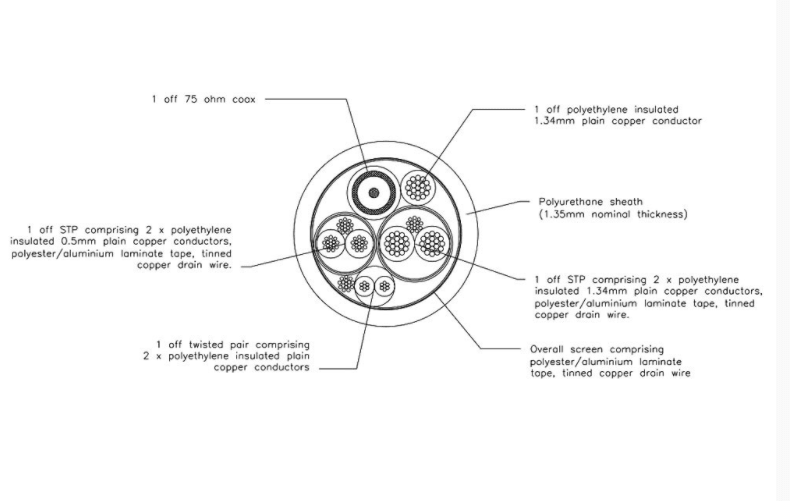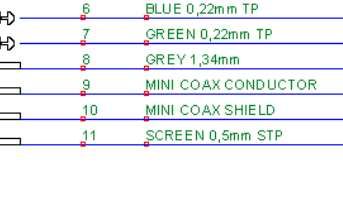uvroy
Electrical
- Mar 20, 2022
- 3
Hi.
I have a cable consisting of 9 leads(wires) with a length of about 100-120 meter. 2 of the leads will be connected to a 4-20ma loop (pressure sensor). I have 3 spare leads, 2 of which is coax core + braid/shield. The last one is a 16 awg / 1,35mm2 lead.
What would be the best solution?
As i
1.
4-20ma supply -> coax core
4-20ma return -> coax braid/shield
2.
4-20ma supply -> 1,35mm2 / 16 awg lead
4-20ma return -> coax braid/shield
3.
4-20ma supply -> 1,35mm2 / 16 awg lead
4-20ma return -> coax core
I have a cable consisting of 9 leads(wires) with a length of about 100-120 meter. 2 of the leads will be connected to a 4-20ma loop (pressure sensor). I have 3 spare leads, 2 of which is coax core + braid/shield. The last one is a 16 awg / 1,35mm2 lead.
What would be the best solution?
As i
1.
4-20ma supply -> coax core
4-20ma return -> coax braid/shield
2.
4-20ma supply -> 1,35mm2 / 16 awg lead
4-20ma return -> coax braid/shield
3.
4-20ma supply -> 1,35mm2 / 16 awg lead
4-20ma return -> coax core


